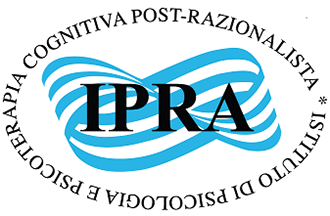Our research interests in neuroscience, psychology and medicine
We investigate how individual differences in emotional experiences underlie the different brain activations engaged in psychological and psychiatric symptoms, and in stress related medical symptoms.

Our first studies show how the Inward-Outward affective dispositions (Arciero & Bondolfi, 2009, Arciero, Bondolfi, Mazzola, 2019) and the genetic component, i.e. the polymorphisms of the serotonin transporter, both explain the activation of the amygdala when processing fearful facial expressions (Bertolino et al. 2005; Rubino et al. 2007).
We have then explored a topic that aroused great interest, empathy, especially pain empathy.
In our next study on empathy for pain (Mazzola et al. 2010), we found that the brain areas activated by the pain expression of one’s partner are different according to the one’s emotional disposition, Inward or Outward.
Specifically, the most Inward participants have greater activity in the insula, an area that maps the body and viscerality, while the more Outward participants in the precuneus and posterior cingulate, areas responsible for monitoring the external context in relation to themselves.

Another topic of great interest to us is the observation of the action, its recognition and understanding (Arciero, 2006).
We have created a task ables to show persons performing the same action of grasping an object but with different facial expressions. The results show how the brain areas responsible for voluntary movement (cerebellum-thalamus-cortical loop) are activated according to the emotional context rather than those of the mirror neuron system (Mazzola et al. 2013).
Hence, given that it is the ongoing emotional context, in which the action is happening, primary to process the action in itself, we then show how the insula is differently involved in action understanding according to the emotional contexts, as for instance anger or joy (Mazzola et al. 2016), and to the Inward-Outward affective dispositions (Mazzola et al. 2020).
In collaboration with the LabNic, we investigate the neural correlates underlying the relationship between fear, alarm and action in people with functional neurological symptoms.
About psychopathology, the interaction between the emotional context and the observation of the action was also investigate in a group of patients with schizophrenia (in preparation). Always putting at the center the emotional engagement, in another sample of patients affected by schizophrenia we investigate the circuits involved in watching people laughing and crying, both in congruent conditions (visual and audio of the same emotion) and incongruent (different visual and audio) (in preparation).

In collaboration with the Liaison Psychiatry service of the University Hospitals of Geneva, we explore the vulnerability and the link between emotional reactivity, brain activity and neuroinflammation markers in patients with neurogenic heart diseases.

We conducted a study on the construction of the DASQ Inward-Outward Dispositional Affective Styles Questionnaire (Mazzola et al. 2014). A second validation study of the DASQ is in preparation.
We study also the relationship between the linguistic competence and the mirror recognition skill in 90 children aged 17 to 24 months (in preparation).

Research articles in neuroscience, psychology and medicine
Emotion-body connection dispositions modify the insulae-midcingulate effective connectivity during anger processing
What Impact does An Angry Context have Upon Us? The Effect of Anger on Functional Connectivity of the Right Insula and Superior Temporal Gyri
ORIGINAL RESEARCH ARTICLE Front. Behav. Neurosci., 06 June 2016 Viridiana Mazzola1, Patrik Vuilleumier2, Leonardo Fazio3, Tiziana Lanciano4,5, Barbara Gelao3, Teresa Popolizio4, Giampiero Arciero5,7, Guido Bondolfi7*, Alessandro Bertolino3* 1Department of...
The In-Out dispositional affective style questionnaire (IN-OUT DASQ): an exploratory factorial analysis
ORIGINAL RESEARCH ARTICLE Front. Psychol. | doi: 10.3389/fpsyg.2014.01005 The In-Out dispositional affective style questionnaire (IN-OUT DASQ): an exploratory factorial analysis Viridiana Mazzola1*, Giuseppe Marano2, Elia M. Biganzoli2, 3, Patrizia Boracchi2, Tiziana...
Effects of Emotional Contexts on Cerebello-Thalamo-Cortical Activity during Action Observation
Viridiana Mazzola, Patrik Vuilleumier, Valeria Latorre, Annamaria Petito, Vittorio Gallese, Teresa Popolizio, Giampiero Arciero, Guido Bondolfi http://dx.plos.org/10.1371/journal.pone.0075912
Stress-Related Methylation of the Catechol-O-Methyltransferase Val158 Allele Predicts Human Prefrontal Cognition and Activity
The Journal of Neuroscience, May 4, 2011 • 31(18):6692– 6698 Gianluca Ursini,1,2 Valentina Bollati,3,4 Leonardo Fazio,1 Annamaria Porcelli,1 Luisa Iacovelli,5 Assia Catalani,5 Lorenzo Sinibaldi,2Barbara Gelao,1 Raffaella Romano,1 Antonio Rampino,1 Paolo...
Affective Response to a Loved One’s Pain: Insula Activity as a Function of Individual Differences
PLoS ONE 5(12): e15268. doi:10.1371/journal.pone.0015268 Viridiana Mazzola1*, Valeria Latorre1,2, Annamaria Petito3, Nicoletta Gentili1,4, Leonardo Fazio5, Teresa Popolizio6, Giuseppe Blasi5, Giampiero Arciero1, Guido Bondolfi7 1 Istituto di Psicologia...
Activity in medial prefrontal cortex during cognitive evaluation of threatening stimuli as a function of personality style
Brain Research Bulletin 74 (2007) 250–257 Valeria Rubinoa, Giuseppe Blasia, Valeria Latorrea, Leonardo Fazioa, Immacolata d’Erricob, Viridiana Mazzolab, Grazia Caforioa, Marcello Nardinia, Teresa Popolizioc, Ahmad Haririd, Giampiero Arcierob, Alessandro Bertolinoa,c...
Variation of human amygdala response during threatening stimuli as a function of 5HTTLPR genotype and personality style
Biol. Psychiatry (2005) vol.57 (12): pp. 1517-1525 Alessandro Bertolino, MD, PhD 1,3,4, Giampiero Arciero, MD 2, Valeria Rubino MD 1, Valeria Latorre MD 1, Mariapia De Candia, PhD 1, Viridiana Mazzola, PhD 2, Giuseppe Blasi, MD 1,3, Grazia Caforio, MD 1, Ahmad Hariri,...
